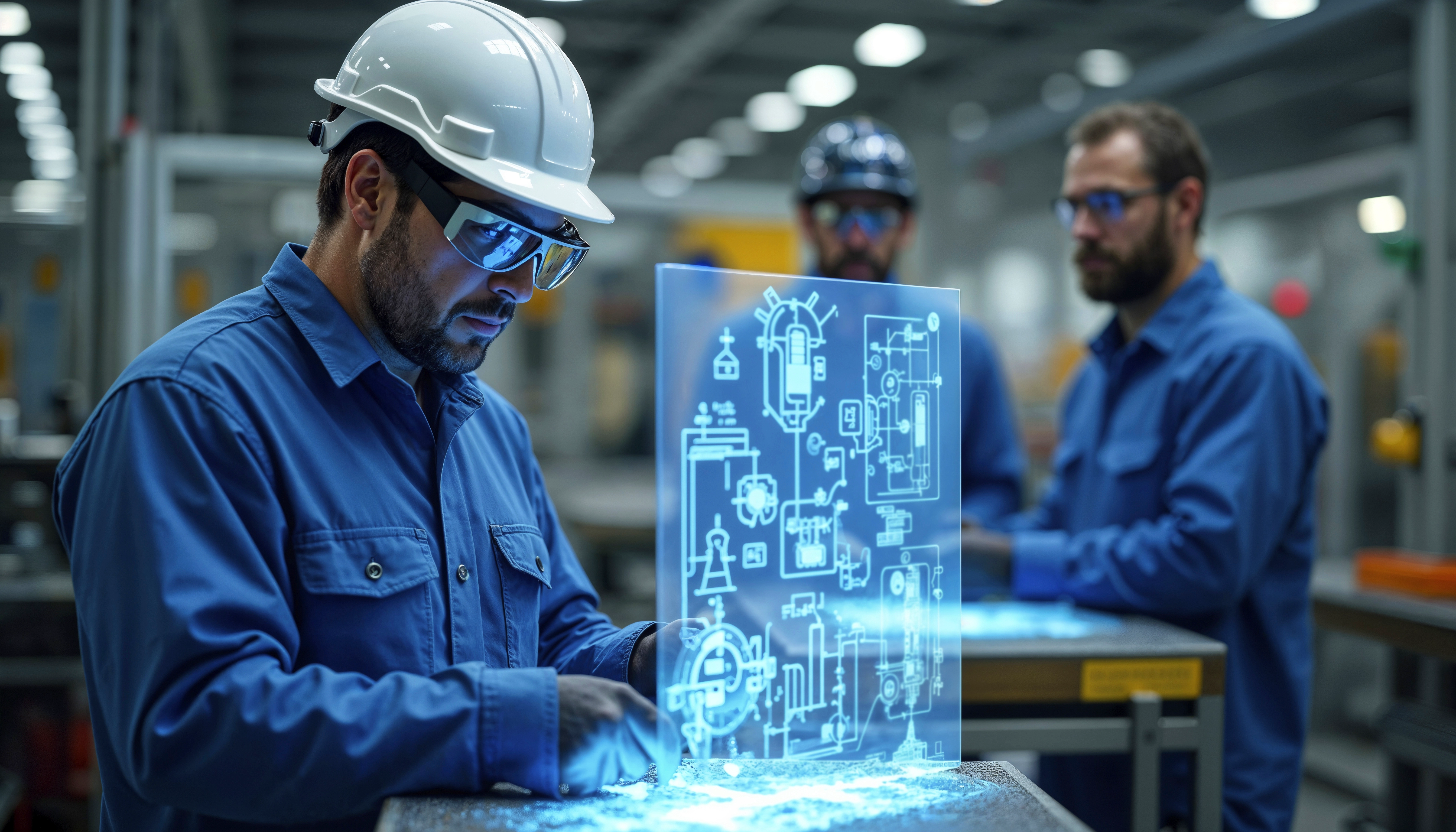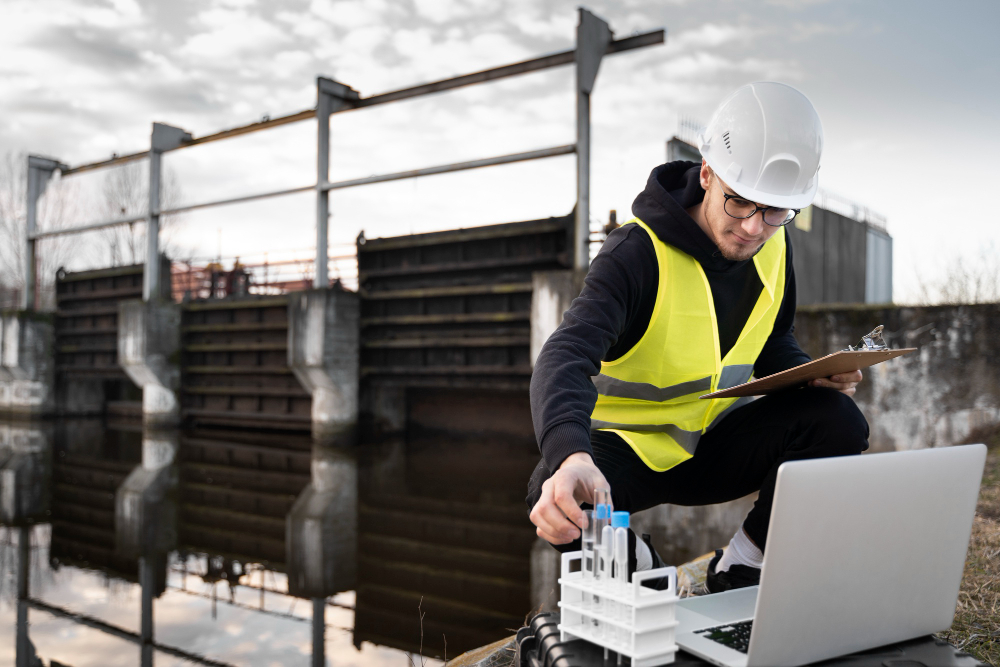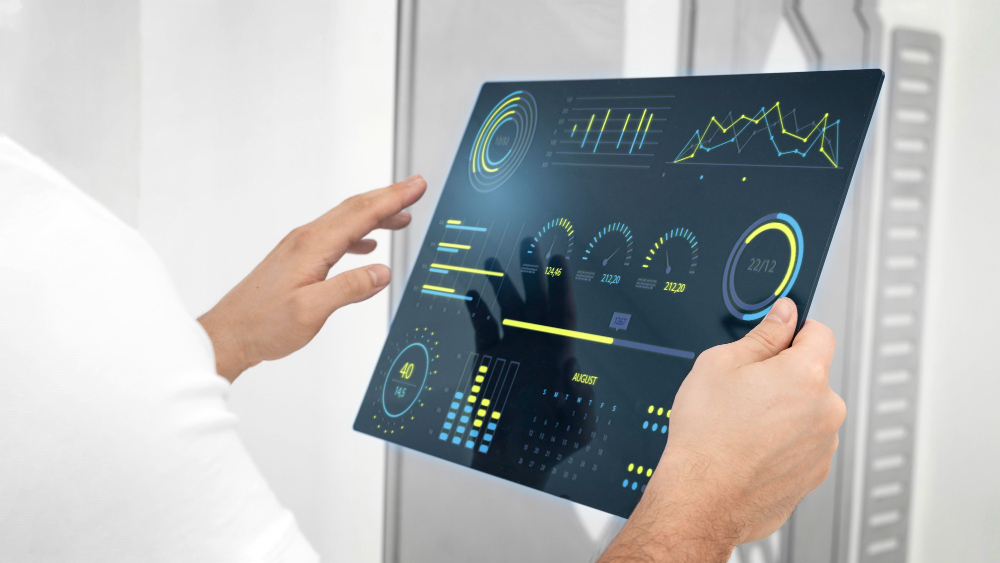
Blog Events
EAGLE-VIEW : A leading industrial control systems company. Explore our blog events to learn more about innovations, industry trends, and company milestones.

01-03-2025
Technical consultancy
Mas Trading has a professional technical team that provides a full range of services, from consultancy, design and engineering .
We work in partnership with our customers to deliver high quality, innovative and responsive solutions to meet their requirements across a wide range of market sectors including Oil & Gas, Petrochemical, Power generation & Transmission, Water & Wastewater, building management systems (BMS) and some other industries.
Mas Trading has a professional technical team that provides a full range of services, from consultancy, design and engineering .
We work in partnership with our customers to deliver high quality, innovative and responsive solutions to meet their requirements across a wide range of market sectors including Oil & Gas, Petrochemical, Power generation & Transmission, Water & Wastewater, building management systems (BMS) and some other industries.
Mas Trading has a professional technical team that provides a full range of services, from consultancy, design and engineering .
We work in partnership with our customers to deliver high quality, innovative and responsive solutions to meet their requirements across a wide range of market sectors including Oil & Gas, Petrochemical, Power generation & Transmission, Water & Wastewater, building management systems (BMS) and some other industries.

The Future of Maintenance: How CMMS is Transforming Industries
In today's fast-paced environment, the need for efficient maintenance management is more crucial than ever. Computerized Maintenance Management Systems (CMMS) are revolutionizing how industries approach maintenance, leading to increased operational efficiency and reduced costs.
What is CMMS?
A CMMS is a software tool that helps organizations manage maintenance activities, track assets, and streamline operations. By utilizing a CMMS, companies can shift from reactive to proactive maintenance strategies.
Benefits of Implementing CMMS
Improved Asset Management: Keep track of all equipment and assets effectively.
Predictive Maintenance: Use data analytics to anticipate equipment failures before they occur.
Cost Reduction: Minimize downtime and maintenance costs.
Enhanced Reporting: Generate detailed reports for better decision-making.
Embracing a CMMS can significantly transform maintenance operations, ensuring businesses remain competitive in an ever-evolving market.

Benefits of Water Quality Monitoring Stations in Factories
Water is one of the most vital natural resources upon which various industries rely. With increasing environmental pressures and climate change, ensuring water quality and efficient usage has become a critical issue that factories must manage effectively. Let’s discover the importance of installing water quality monitoring stations in factories and how these stations can help in pollutant monitoring, water consumption tracking, energy management, and ultimately enhance sustainability and innovation in industrial processes.
1. The Project of Installing Water Quality Monitoring Stations
Importance of Monitoring Stations
Water quality monitoring stations are essential tools for keeping track of the quality of water used in industrial processes. These stations help analyze pollutants, enabling factories to take immediate actions to reduce contamination and ensure operational safety.
How Do They Work?
Water quality monitoring stations utilize a combination of sensors and devices to measure various pollutant levels, such as heavy metals, organic materials, and bacteria. Data is continuously collected and analyzed, allowing manufacturers to monitor quality in real-time.
2. Monitoring Water Quality and Analyzing Pollutants
Benefits of Continuous Monitoring
Improved Productivity: By ensuring water quality, factories can enhance production processes and reduce waste resulting from contamination.
Regulatory Compliance: Continuous monitoring helps verify that factories adhere to environmental and health standards, lowering legal risks.
Environmental Protection: Analyzing pollutants contributes to minimizing the negative environmental impacts of industrial operations.
3. Monitoring Water Loss
Utilizing Innovative Programs
Water consumption monitoring programs are effective tools for identifying waste in factories. By analyzing input data, these programs can pinpoint areas of loss and measure the amounts of water used across various processes.
Benefits of Water Loss Monitoring
Cost Savings: By detecting waste, factories can reduce costs associated with water usage.
Efficiency Improvement: Monitoring water loss helps enhance water use efficiency, leading to resource sustainability.
4. Energy Management
Improving Energy Consumption
Energy management is a crucial aspect of industrial operations. Water quality monitoring stations can contribute to better energy consumption through:
Determining Effective Energy Use: By analyzing data, manufacturers can identify peak energy consumption times and optimize operational schedules.
Reducing Waste: Improving water consumption directly impacts energy use, promoting sustainability.
5. Sustainability and Innovation
Enhancing Sustainability
Installing water quality monitoring stations represents a strategic step towards achieving sustainability in factories. Through continuous monitoring and data analysis, factories can make informed decisions that help conserve resources and protect the environment.
Innovation in Processes
Modern technology contributes to innovative solutions for enhancing water quality and resource management. By leveraging these solutions, factories can boost their competitive capabilities and meet sustainability goals.
The installation of water quality monitoring stations in factories is a strategic investment that enhances operational efficiency, reduces costs, and promotes sustainability. By monitoring water quality and analyzing pollutants, factories can take effective steps toward environmental protection and process innovation. Utilizing this technology is not just a move to improve performance; it is also a commitment to a more sustainable future.

How Industries Can Benefit from CMMS Technology
In today's competitive landscape, industries are constantly seeking ways to improve operational efficiency, reduce costs, and enhance productivity. One powerful tool that has emerged to address these needs is the Computerized Maintenance Management System (CMMS). This technology is not only transforming maintenance practices but also providing significant benefits across various sectors, including manufacturing, healthcare, utilities, and more. Here we will explore how different industries can leverage CMMS technology to optimize their operations and achieve sustainable growth.
1. Manufacturing Industry
Overview
The manufacturing sector is the backbone of many economies, and efficiency is paramount. CMMS technology can revolutionize how manufacturers manage their equipment and maintenance processes.
Benefits
Reduced Downtime: By implementing a CMMS, manufacturers can schedule preventive maintenance, which minimizes unexpected equipment failures and reduces production downtime.
Asset Management: CMMS allows for effective tracking of machinery, enabling manufacturers to optimize asset utilization and prolong equipment life.
Data-Driven Decisions: With real-time data analytics, manufacturers can make informed decisions regarding maintenance schedules and resource allocation.
Case Study
A leading automotive manufacturer implemented a CMMS and reported a 30% reduction in equipment downtime, leading to increased production efficiency and cost savings.
2. Healthcare Sector
Overview
In healthcare, maintaining equipment is crucial for patient safety and operational efficiency. CMMS technology can enhance the management of medical devices and facilities.
Benefits
Regulatory Compliance: CMMS helps healthcare facilities stay compliant with regulatory standards by tracking the maintenance and calibration of medical equipment.
Improved Patient Care: By ensuring that medical devices are well-maintained, hospitals can provide better care and reduce the risk of equipment failure during critical procedures.
Resource Optimization: Healthcare organizations can better manage their maintenance budgets and resources through detailed reporting and analytics provided by a CMMS.
Case Study
A hospital network adopted a CMMS system, resulting in a 40% increase in equipment uptime and significantly improved patient satisfaction scores.
3. Utilities and Energy Sector
Overview
Utilities and energy companies face unique challenges, including the need for reliable service delivery and regulatory compliance. CMMS technology can play a critical role in enhancing operational efficiency.
Benefits
Preventive Maintenance: Utilities can schedule regular maintenance on critical infrastructure, such as power plants and water treatment facilities, to prevent service interruptions.
Asset Lifecycle Management: CMMS allows utility companies to track the lifespan of their assets, helping them plan for replacements and upgrades efficiently.
Environmental Compliance: By ensuring that equipment is maintained according to regulations, utilities can avoid fines and enhance their sustainability efforts.
Case Study
A water utility company implemented a CMMS, leading to a 25% reduction in maintenance costs and improved compliance with environmental regulations.
4. Food and Beverage Industry
Overview
The food and beverage industry operates under strict hygiene and safety standards. CMMS technology can help manufacturers ensure compliance and maintain equipment effectively.
Benefits
Quality Assurance: Regular maintenance of processing equipment helps prevent contamination and ensures product quality.
Regulatory Compliance: CMMS aids in tracking maintenance schedules and compliance with food safety regulations, reducing the risk of recalls.
Efficiency Gains: By minimizing equipment breakdowns, food manufacturers can optimize production schedules and reduce waste.
Case Study
A major food processing plant utilized CMMS to enhance equipment reliability, resulting in a 20% increase in production output and a significant reduction in waste.
5. Facility Management
Overview
Facility management encompasses a wide range of services, including maintenance, cleaning, and security. CMMS technology can streamline operations and improve service delivery.
Benefits
Work Order Management: CMMS simplifies the creation and tracking of work orders, ensuring timely maintenance and repairs.
Resource Allocation: Facility managers can better allocate resources by analyzing maintenance data and trends.
Enhanced Communication: CMMS facilitates communication between facility managers and maintenance teams, improving responsiveness to issues.
Case Study
A large commercial facility adopted a CMMS, leading to a 30% improvement in response times for maintenance requests and enhanced tenant satisfaction.
CMMS technology is a game-changer for various industries, providing the tools needed to optimize maintenance processes, reduce costs, and enhance operational efficiency. From manufacturing to healthcare, utilities, food and beverage, and facility management, organizations can leverage CMMS to achieve their goals and drive sustainable growth. As industries continue to evolve, embracing such innovative technologies will be essential for staying competitive in a rapidly changing market. Investing in a CMMS is not just a smart move; it's a necessary step toward future-proofing operations and ensuring long-term success.

Water Quality Management: The Role of Technology in Sustainable Practices
Water quality management is essential for public health and environmental sustainability. With increasing pollution levels, technology plays a pivotal role in monitoring and ensuring water safety.
Importance of Water Quality Management
Ensures safe drinking water.
Protects aquatic ecosystems.
Meets regulatory standards.
Technological Innovations in Water Quality Management
Real-Time Monitoring Systems: Implement sensors for continuous water quality assessment.
Data Analytics: Use AI and machine learning to analyze water quality data.
Automated Reporting: Generate compliance reports easily.
Integrating technology into water quality management practices enhances sustainability efforts and promotes environmental health.

Effective Water Management Strategies for Factories
Water management is crucial for factories, especially in industries that rely heavily on water for production processes. Effective water management not only helps in conserving this precious resource but also improves efficiency and reduces costs. This blog will discuss practical water management strategies that every factory can implement to optimize water usage and ensure sustainability.
What is Water Management?
Water management involves planning, developing, and managing water resources to meet the needs of an organization while minimizing waste and environmental impact. For factories, this means using water efficiently throughout the production process.
Key Water Management Strategies for Factories
1. Water Recycling and Reuse
Implementing water recycling systems allows factories to treat and reuse water within their operations. For example, water used in cooling systems can be filtered and reused, significantly reducing overall water consumption.
2. Rainwater Harvesting
Collecting rainwater is an excellent way for factories to supplement their water supply. Installing rainwater harvesting systems can provide an alternative water source for non-potable uses, such as irrigation and cleaning.
3. Regular Water Audits
Conducting regular water audits helps identify areas of excessive water use or leaks. By monitoring water consumption patterns, factories can pinpoint inefficiencies and take corrective actions to reduce waste.
4. Employee Training
Educating employees about the importance of water conservation can lead to significant improvements in water management. Training programs can teach staff how to use water-saving techniques and encourage them to report leaks or wastage.
5. Implementing Smart Technologies
Using smart water management technologies, such as sensors and automated systems, can help monitor water usage in real-time. These technologies provide valuable data that can be used to optimize water use and detect leaks promptly.
Effective water management is essential for factories aiming to reduce costs and promote sustainability. By implementing strategies such as water recycling, rainwater harvesting, and employee training, factories can optimize their water usage and minimize waste. Focusing on efficient water management not only benefits the environment but also enhances the overall productivity of the factory.

Things to know about MMS Technology
MMS Technology, or Computerized Maintenance Management System, is a software solution designed to help organizations manage their maintenance operations more efficiently. Here are some key features and benefits of CMMS technology:
Asset Management: Keeps track of all assets and equipment, including their maintenance history, warranties, and specifications.
Work Order Management: Allows users to create, assign, and track work orders for maintenance tasks, ensuring timely completion.
Preventive Maintenance: Automates scheduling of regular maintenance tasks to reduce downtime and extend the lifespan of equipment.
Inventory Management: Helps manage spare parts and supplies, ensuring that the necessary items are available when needed.
Reporting and Analytics: Provides insights into maintenance performance, costs, and trends through customizable reports and dashboards.
Mobile Access: Many CMMS solutions offer mobile applications, allowing maintenance staff to access information and complete tasks from the field.
Benefits
Increased Efficiency: Streamlines maintenance processes, reducing the time and effort required for tasks.
Cost Savings: By improving asset management and preventive maintenance, organizations can reduce repair costs and extend equipment life.
Improved Safety: Regular maintenance helps ensure that equipment operates safely, reducing the risk of accidents.
Enhanced Compliance: Helps organizations comply with industry regulations by maintaining accurate records of maintenance activities.
CMMS technology is essential for organizations looking to improve their maintenance operations, reduce costs, and enhance overall efficiency. By leveraging this technology, businesses can ensure that their assets are well-maintained and operational, leading to better productivity and performance.

Why CMMS Is a Must-Have for Modern Manufacturing — Not a Luxury
In today’s fast-paced manufacturing world, competition is fierce, waste is unacceptable, and unplanned downtime can cost companies thousands — if not millions — in losses. Amid all this pressure, a Computerized Maintenance Management System (CMMS) is no longer just a helpful tool — it’s a core necessity for any factory aiming for efficiency and sustainability.
What Exactly Is a CMMS?
A CMMS (Computerized Maintenance Management System) is a digital solution that fully automates maintenance operations across your facility. From asset registration and preventive maintenance scheduling to fault tracking, performance reporting, and analytics everything happens through a single platform.
⚠️ What Happens Without a CMMS?
1- Unexpected Equipment Failures.
Unplanned breakdowns don’t just stop your machines — they disrupt your entire schedule, delay deliveries, and impact your bottom line.
2- Maintenance Becomes Hard to Track.
Without a structured system, maintenance is often handled via spreadsheets or sticky notes. This leads to missed checkups, neglected equipment, and costly repairs.
3- Wasted Time & Resources.
Technicians waste valuable time hunting down spare parts, work orders, or historical records — slowing down productivity and increasing frustration.
4- Unclear Maintenance Costs.
Without a CMMS, it’s hard to track the true cost of maintaining specific machines or lines, and even harder to control spending.
✅ CMMS Isn’t Just a Fix — It’s an Investment.
1- Reduced Downtime.
Automated scheduling and alerts help prevent issues before they happen — keeping machines running smoothly.
2- Extended Equipment Lifespan.
Timely maintenance keeps assets in top shape, reducing wear and tear and ensuring longer service life.
3- Smart Inventory Management.
CMMS tools track parts usage and inventory levels to prevent shortages or excess stock — both of which cost you money.
4- Real-Time Reports for Better Decisions.
Instead of guessing, you’ll make data-driven decisions with access to live reports and detailed maintenance analytics.
5-Integration with Other Systems.
Like what MAS Automation offers — a CMMS that seamlessly integrates with ERP and SCADA systems for complete operational visibility.
Real Success Stories.
Take MAS Automation’s “Eagle View” project, for example — their CMMS helped multiple factories significantly cut downtime and boost productivity. One facility struggling with recurring breakdowns saw a 27% reduction in maintenance costs in just six months after full implementation.
Is a CMMS Right for You?
If you operate more than 5 key machines, run production lines sensitive to any delays, or struggle to track maintenance manually — it’s time to invest in a CMMS. A CMMS is not a luxury — it’s a critical component for any factory that wants to improve efficiency, reduce waste, and stay competitive. MAS Automation offers a smart, customizable CMMS that adapts to your industrial needs and integrates seamlessly with your existing systems.

How MAS CMMS Turns Maintenance Data into Smart Decisions
In large-scale manufacturing facilities, data is everywhere — but the real challenge is transforming that raw data into actionable insights. That’s exactly what MAS Automation’s CMMS does. It doesn’t just collect maintenance records — it analyzes and translates them into smart, real-time decisions that boost efficiency and productivity.
More Than Just Data Logging — It Creates Value.
Traditional systems usually stop at logging faults and scheduling maintenance. MAS CMMS goes beyond that:
It detects recurring patterns and trends.
It connects breakdowns with cost data and asset types.
It visualizes everything with intuitive dashboards and smart charts.
How MAS CMMS Acts Like an Analytical Brain for Your Facility.
1- Live Dashboards.
Right from the main screen, you get a clear visual overview of:
Total maintenance costs (preventive vs corrective).
Number of breakdowns within a given period.
The most cost-intensive machines.
Budget vs actual spending comparisons.
2- Smart, Custom Reports.
You can generate tailored reports based on your specific needs, such as:
Reports by production line.
Comparisons between machines of the same type.
Breakdown trends throughout the year.
3- Key Performance Indicators (KPIs).
MAS CMMS tracks crucial KPIs like:
MTBF (Mean Time Between Failures).
MTTR (Mean Time to Repair).
Cost per Asset.
Percentage of preventive maintenance vs total maintenance.
4- Seamless Inventory Integration.
When a machine fails, the system instantly suggests the spare part needed and shows whether it’s available in stock. If not, it can connect you to approved suppliers for quick restocking.
A Real-World Example.
In one project handled by MAS Automation, a factory was struggling with frequent breakdowns in its packaging lines, causing delays in deliveries. After implementing the CMMS and analyzing the data:
It was revealed that 70% of breakdowns occurred after extended use without preventive maintenance.
The system recommended a new preventive schedule.
Result: Breakdowns dropped by 45% in just four months.
Data-Driven Decisions = Smarter Factory.
With MAS CMMS, you're not just tracking what’s going wrong — you’re understanding why, learning from it, and making better decisions, such as:
Prioritizing critical assets.
Optimizing manpower allocation.
Deciding whether to repair or replace equipment.
Planning realistic maintenance budgets based on facts, not assumptions.
Who Benefits Most from This Smart Analysis?
Maintenance Managers looking to cut costs
Plant Managers aiming to boost operational efficiency
Business Owners who need full visibility over assets and resources

The Hidden Secrets to Cutting Operational Costs with Smart Maintenance Systems
Controlling operational expenses is no longer optional — it’s a key success factor for every manufacturing facility. With rising costs of raw materials and energy, every saved pound makes a difference. That’s where smart maintenance systems like MAS CMMS come in — not only to keep your machines running, but to help you save intelligently, without compromising quality or disrupting operations.
Which Operating Costs Can Smart Maintenance Actually Reduce?
1- Unexpected Breakdown Costs.
Every minute of unplanned downtime = lost production and missed sales.
2- MAS CMMS.
prevents this by using preventive maintenance schedules and smart alerts to fix issues before they become disasters.
3- Spare Parts Waste.
The system tracks usage of every part, helping you avoid overstocking or unnecessary replacements.
4- Excessive Maintenance Labor Costs.
Tasks are automatically assigned based on priority and technician skills — minimizing repair time and maximizing team efficiency.
5- Rework & Poor Quality Costs.
Machines in poor condition often produce defective outputs — costing you twice in materials and reprocessing.
6- Excess Energy Consumption
Underperforming equipment uses more energy. MAS CMMS identifies these inefficiencies and helps optimize performance.
How Does MAS CMMS Actually Reduce Costs?
1- Preventive Over Corrective Maintenance.
The system schedules maintenance based on usage or time — so you fix the machine before it breaks down, not after.
2- Smart Inventory Management.
Know exactly what’s in stock.
Get suggestions for optimal quantities.
Avoid storing unused parts that waste space and money.
3- Track Repair Time & Reduce Downtime.
The system logs downtime for every repair.
Compare performance across machines.
Make better decisions on whether to upgrade or replace equipment.
4- Cost Analysis & Budget Planning.
Analyze costs by asset, line, plant, or issue type.
Build next year’s maintenance budget based on real numbers — not guesses.
Real-Life Example:
One MAS Automation client struggled with high maintenance expenses. After using the system for just 6 months:
Unplanned breakdowns dropped by 40%
Inventory waste was reduced by EGP 120,000
Overall operational costs went down by 18%
Pro Tip:
If you manage a factory or industrial facility, know this: every pound lost without oversight is a preventable loss. MAS CMMS gives you the power to monitor every detail — and take control before things spiral out of budget.
Conclusion:
Smart maintenance systems aren’t just software — they’re long-term investments that save you real money. MAS CMMS doesn’t just fix problems — it prevents them before they happen, and delivers measurable savings backed by real data.

The Startup’s Guide to Choosing the Right CMMS
If your company is still in its early stages or is operating as a small to mid-sized enterprise, you’ve probably asked yourself:
“Do I really need a CMMS right now? Which one should I choose? What’s the difference between them?”
This guide is made for you — to help you understand how to choose the right Computerized Maintenance Management System (CMMS) that matches your company’s size and resources.
When Should You Start Using a CMMS?
If you’re facing any of the following issues:
Equipment is breaking down frequently.
You struggle to keep track of maintenance schedules.
Spare parts inventory is unclear.
You're spending too much on maintenance with little to show for it.
Then it’s time to stop thinking of CMMS as a luxury — it’s a necessity.
Main Types of CMMS Systems.
Cloud-Based CMMS:
Fast setup.
Lower initial cost.
Secure data.
Accessible from anywhere.
On-Premises CMMS:
Greater data privacy.
Full control.
Requires in-house IT support.
At MAS Automation, both options are available — tailored to your company’s infrastructure and IT setup.
How to Choose the Right CMMS?
1- Number of Assets You Manage.
Less than 50 machines? A simple system can do the job.
More than that? You'll need a powerful platform like MAS CMMS.
2- Maintenance Team Size.
MAS CMMS allows you to assign roles, manage permissions, and delegate tasks easily — whether your team is small or large.
3- What’s Your Operating Budget?
Choose a scalable solution that lets you start small and expand as your business grows.
4- Do You Need Integration with ERP or SCADA?
If you operate in manufacturing or industrial sectors, seamless integration is crucial — and MAS CMMS fully supports it.
Golden Tips Before You Choose.
Always test a live demo before purchasing.
Ask about after-sales support and technical assistance.
Make sure the system is scalable as your operations expand.

CMMS × ERP × SCADA: How Integration Drives Real Operational Efficiency
When each system operates in isolation, you get bits of information here and there — but no complete picture. But when you integrate CMMS, ERP, and SCADA, you unlock a unified operations platform where everything is connected in real time. That’s exactly what MAS Automation delivers.
What Does Integrating These Systems Actually Mean?
CMMS handles equipment maintenance and tracks asset conditions.
ERP manages resources, budgets, and procurement.
SCADA monitors real-time operations using sensors and control systems.
When integrated, these systems can answer:
“What’s happening? Why is it happening? And what should we do next?”
1- Real-World Example of Integration.
In a feed production plant, MAS Automation integrated:
CMMS automated maintenance scheduling.
ERP work orders.
SCADA real-time machine performance.
2- The result?
35% reduction in downtime
Consolidated and accurate reports
Instant decision-making — no need to wait for weekly review meetings
Top Benefits of CMMS–ERP–SCADA Integration.
Link every equipment failure to its financial impact.
Compare maintenance costs against allocated budgets.
Faster response time to any issue or anomaly.
Higher operational quality and improved production outcomes.

Key Maintenance KPIs You Should Track on Your CMMS Dashboard
If you manage a factory, you don’t just need to know what happened — you need to know why it happened, and what to do next. That’s where the MAS CMMS dashboard comes in. It’s not just a collection of numbers — it’s a smart command center filled with real-time Key Performance Indicators (KPIs) that help you monitor, diagnose, and make fast, informed decisions.
Essential KPIs to Monitor:
1- MTBF (Mean Time Between Failures).
Measures equipment reliability — how many operating hours pass between failures?
2- MTTR (Mean Time to Repair) .
Shows how long it typically takes to fix each breakdown.
3- Cost per Asset .
Tracks how much has been spent maintaining each individual asset.
4- Breakdown Maintenance % .
A high percentage indicates poor preventive maintenance — a red flag you shouldn’t ignore.
5- Preventive Maintenance Compliance % .
The closer this is to 100%, the fewer unexpected breakdowns you’ll experience.
6- Spare Parts Consumption by Asset .
Identifies which machines consume the most parts — and whether that’s expected or a sign of deeper issues.
What Else Does MAS CMMS Dashboard Show You?
Work order status (Completed – In Progress – Overdue – Cancelled).
Monthly and yearly maintenance costs.
Cross-factory or production line comparisons.
Maintenance team performance.
Why Real-Time Monitoring Matters?
Faster decisions when it counts.
Prevent costs from spiraling out of control.
Smarter resource allocation.

How MAS CMMS Supports Sustainability and Waste Reduction
Sustainability is no longer just a buzzword — it’s a strategic necessity, especially in industries with high energy and resource consumption. MAS CMMS offers practical, intelligent tools that help you run more sustainable operations, reduce waste, and protect the environment — all in a structured, data-driven way.
What’s the Link Between CMMS and Sustainability?
Regular maintenance = higher efficiency = lower energy use.
Proactive fault detection reduces equipment replacements.
Performance analytics identify excessive consumption and how to fix it.
How MAS CMMS Helps You Operate More Sustainably?
Monitors electricity, water, and gas consumption.
Analyzes the operational efficiency of each asset.
Generates detailed resource usage reports by time or production line.
Prevents premature replacement of parts by tracking actual performance.
Real-World Example.
In a project managed under the German GIZ agency, MAS CMMS was used to track and reduce water loss in a large-scale utility network. Within six months, water waste was reduced by 25% through smart monitoring and preventive actions.